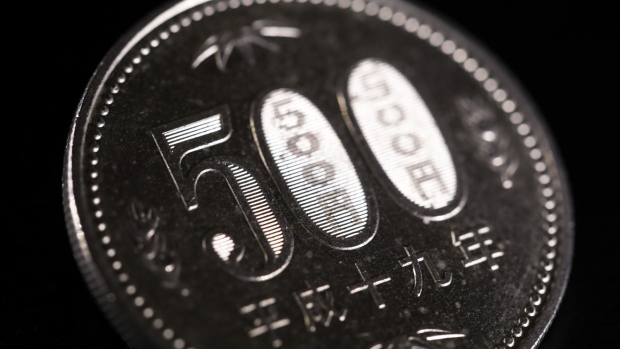Mar 26, 2024
Yen Drops to Lowest Since 1990
, Bloomberg News

(Bloomberg) -- Japan had its toughest warning yet for traders on its willingness to intervene in currency markets after the yen slid to its weakest level in about 34 years against the dollar.
The nation’s currency dipped to 151.97 versus the greenback early on Wednesday in Tokyo — beyond the level at which policymakers stepped in during October 2022 — before comments from government officials on their readiness to act boosted the yen to its strongest level of the day.
“We are watching market moves with a high sense of urgency,” Finance Minister Shunichi Suzuki said. “We will take bold measures against excessive moves without ruling out any options.” Suzuki’s reference to bold action is generally interpreted to mean direct intervention in the currency market.
Masato Kanda, the top currency official, later reiterated the message that speculative moves in markets wouldn’t be tolerated following a three-way meeting between ministers, the central bank and financial regulator.
The yen’s rapid decline comes even after the Bank of Japan raised interest rates for the first time since 2007. A lack of guidance pointing to further near-term policy tightening, and the central bank’s insistence that financial conditions will remain easy, have instead pushed the yen in the opposite direction — something that traders have jumped on.
While Kanda said the BOJ would consider addressing the situation with monetary policy if currency moves hit the outlook for the economy or inflation, the central bank is seen as unwilling to risk more than a decade of work to generate price pressures by charging into a series of rate hikes to support the yen.
That leaves Japan looking to the Federal Reserve to start cutting US rates, a move that should indirectly bolster the yen by weighing on dollar. But markets suggest that move is still months away, with swaps pricing the first Fed cut in July.
It all points to a growing tug-of-war between policymakers and markets over how far the yen can fall. Traders already see 152 yen per dollar as the next line in the sand, and have established options bets to capitalize.
A move to that level would trigger some knockout options barriers and a breach may see the Japanese currency extend its decline, according to traders, pointing to investors who’d need to cover their positions.
Big Yen Option Bet Risks Crushing Traders as Intervention Looms
Hedge funds and asset managers combined held a near-record level of bearish positions against Japan’s currency last week, according to data from the Commodity Futures Trading Commission going back to 2006.
“Given recent history, a breach of 152 could instigate intervention,” said Rodrigo Catril, a senior FX strategist at National Australia Bank Ltd. in Sydney. “The break of the previous high has accelerated the move,” he said, referring to the dollar-yen.
Authorities in Tokyo spent ¥9.2 trillion ($60.6 billion) in 2022 to prop up the yen on three occasions, each time insisting that they were not protecting any specific currency level.
By staging the first three-way meeting between the ministries and the central bank since May, Japan’s authorities have left themselves with very few remaining options to ramp up the fear factor for speculators.
A Trader’s Guide to Japanese Policymakers’ Language on the Yen
BOJ Governor Kazuo Ueda offered little in the way of support for the currency in his remarks in parliament. While he said he would closely monitor the effects of exchange rates on the economy, he said the nation’s currency policy was the purview of the finance ministry.
BOJ board member Naoki Tamura said Wednesday that the manner in which monetary policy is managed is going to be extremely important for a slow, steady normalization to put an end to extraordinarily large-scale easing.
Those comments from the central bank’s most hawkish member didn’t do anything to change the narrative that conditions will remain easy in Japan for the time being without an aggressive hiking of rates.
Why the Yen Is So Weak and What That Means for Japan: QuickTake
Investors expect interest-rate differentials between Japan and other developed economies, notably the US, to remain wide even after the BOJ ended the world’s last negative interest-rate regime last week. That’s undermined the yen as investors favor higher-yielding currencies elsewhere.
Ten-year US Treasury bond yields are around 4.2%, about 3.5 percentage points higher than their Japanese counterparts, close to the biggest gap in the past decade.
--With assistance from Emi Urabe, Rachel Evans, Momoka Yokoyama, Toru Fujioka, Beth Thomas, David Finnerty, Ruth Carson and Yoshiaki Nohara.
(Updates with yen move from second paragraph.)
©2024 Bloomberg L.P.





